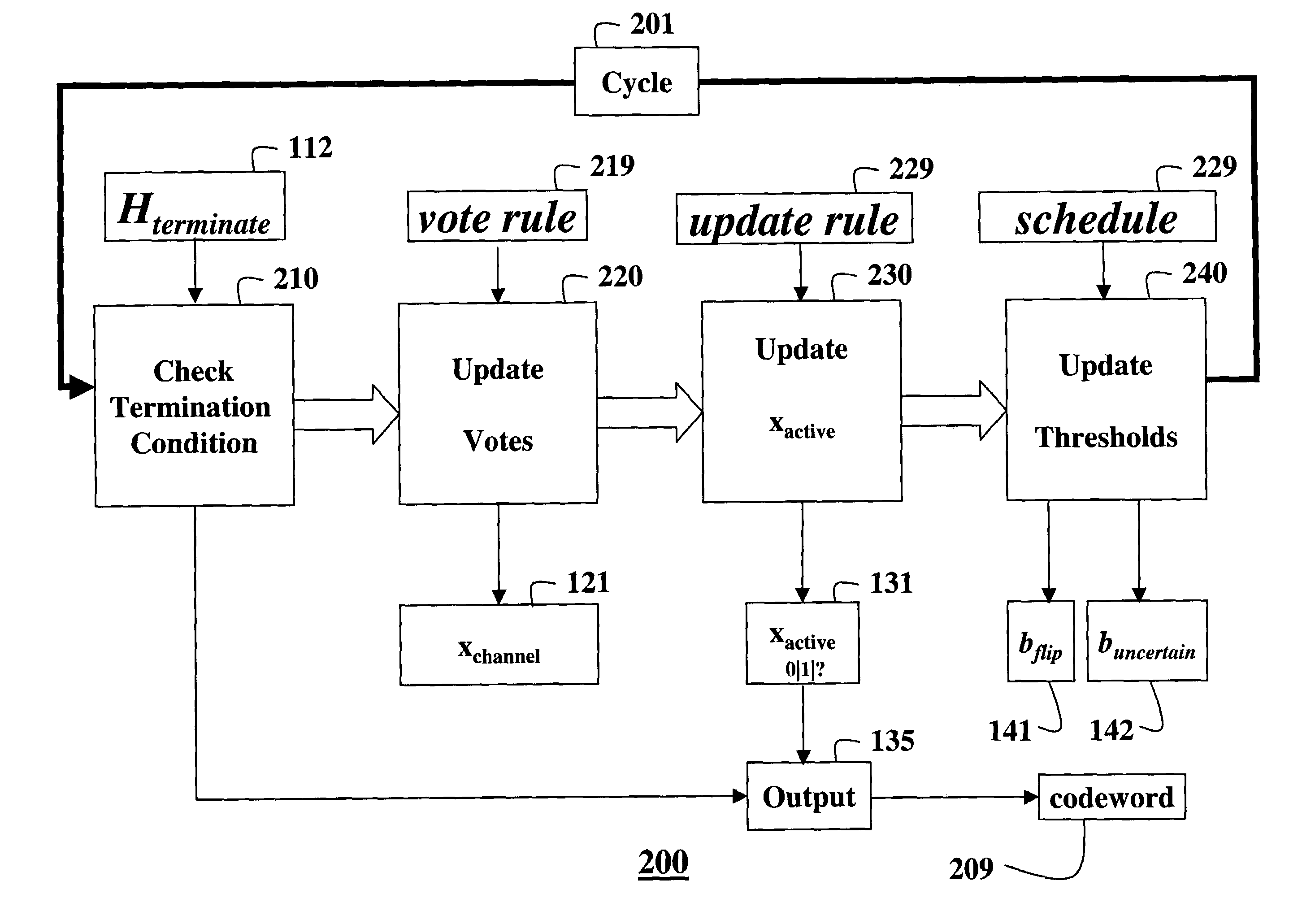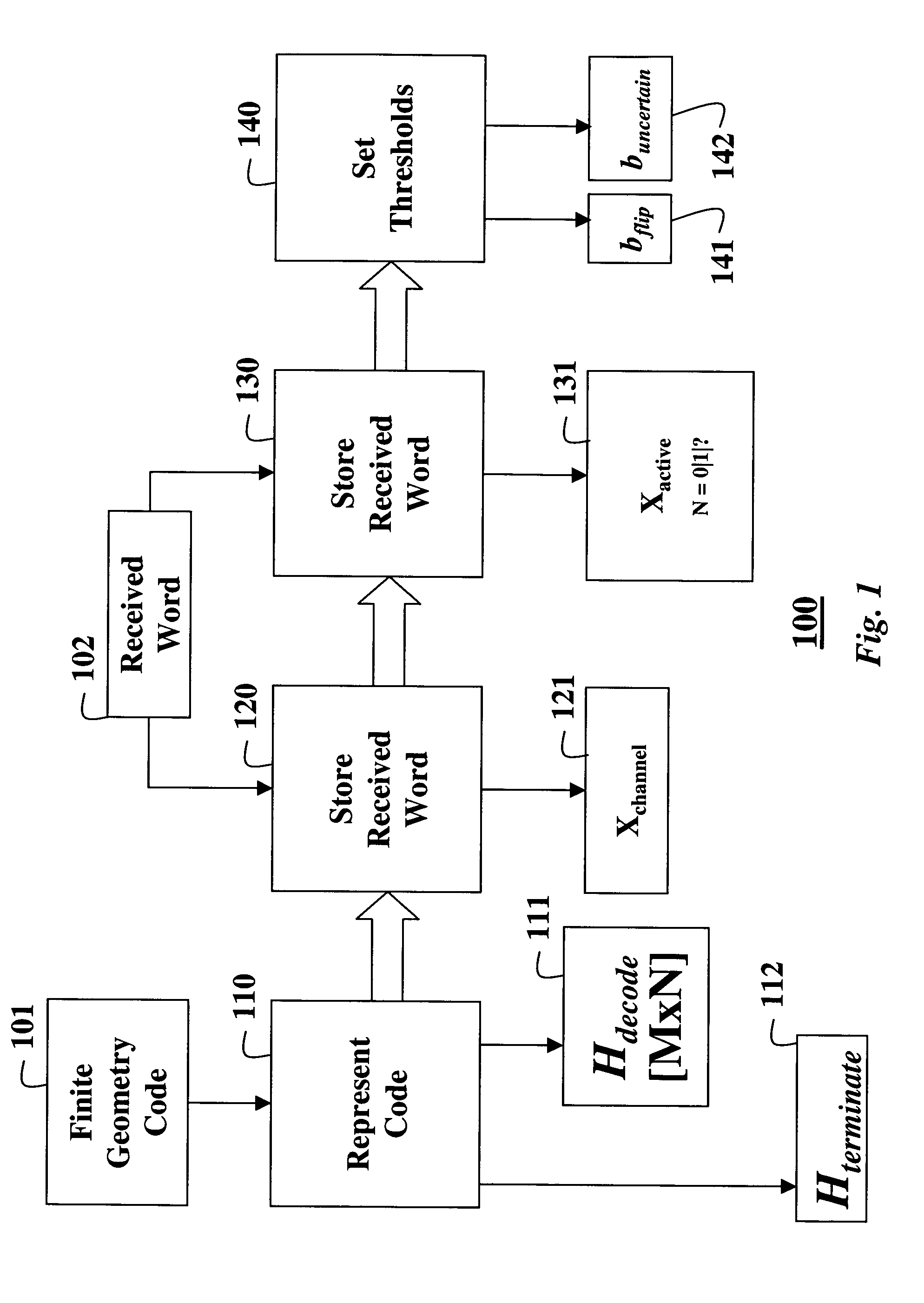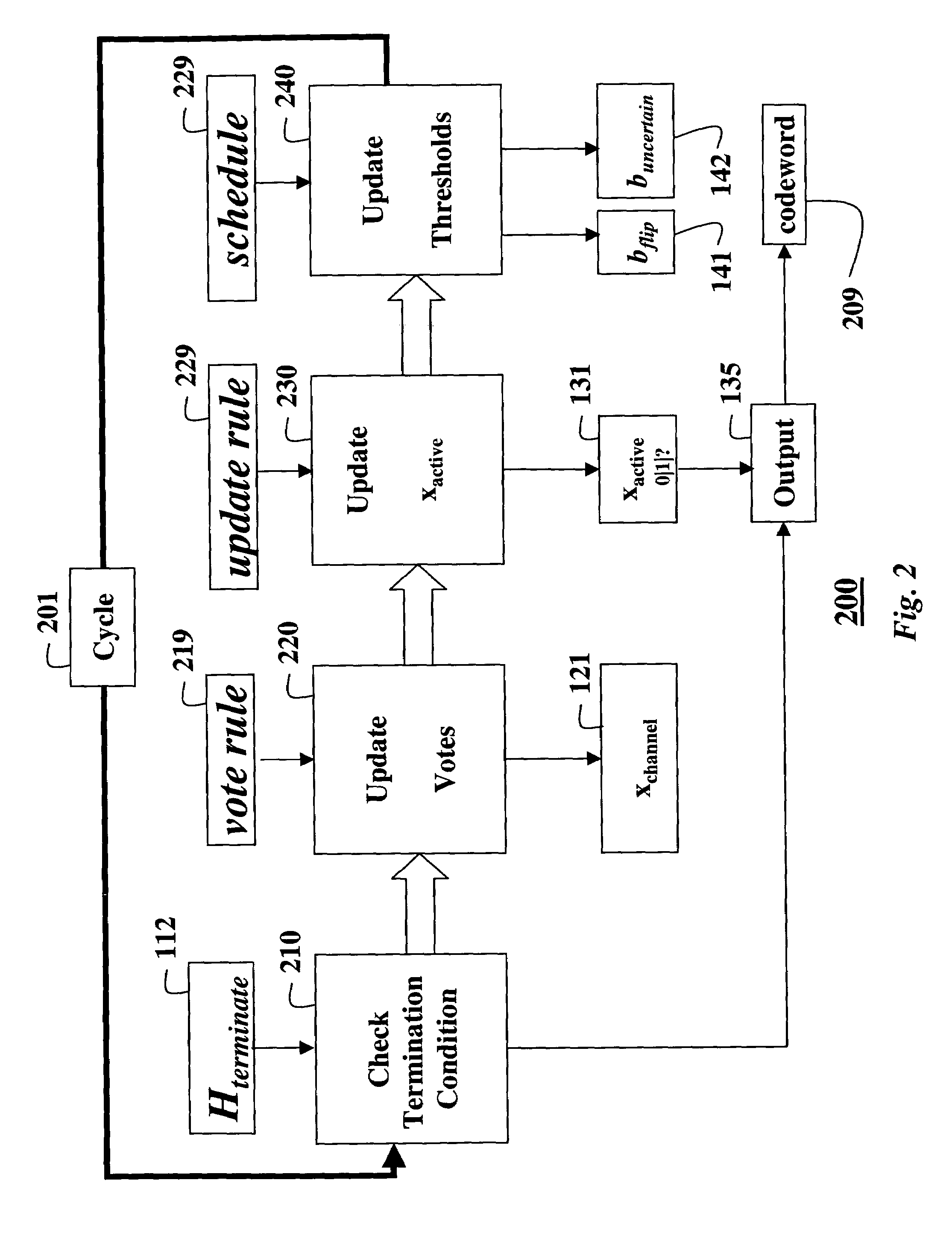Decoding error-correcting codes based on finite geometries
a code and error correction technology, applied in the field of error correction codes for data storage and data transmission, can solve the problems of bounded-distance decoders failing to correctly decode transmitted code-words, storage media, and difficulty in decoding corrupted messages
- Summary
- Abstract
- Description
- Claims
- Application Information
AI Technical Summary
Benefits of technology
Problems solved by technology
Method used
Image
Examples
Embodiment Construction
[0075]Defining a Parity Check Matrix Representation for the Code
[0076]FIGS. 1 and 2 shows steps of a method for decoding an error-correcting code based on a finite geometry according to our invention. The code has a block-length N and a dimension k. The code is based on a finite geometry with a given number of points N and a given number of μ-flats, as known in the art.
[0077]FIG. 1 shows a one-time initialization procedure 100, and FIG. 2 shows the step of an iterative decoding procedure 200.
[0078]Initialization
[0079]More precisely, we define the code 101 by a decoding parity check matrix (Hdecode) 111 whose M rows are incidence vectors of a sub-set of μ-flats in the finite geometry with respect to the points in the finite geometry.
[0080]We define the M by N parity check matrix by selecting a sub-set of the μ-flats in the finite geometry, and using their incidence vectors with respect to the points of the finite geometry as the rows of our parity check matrix 111. We call this parit...
PUM
 Login to View More
Login to View More Abstract
Description
Claims
Application Information
 Login to View More
Login to View More - R&D
- Intellectual Property
- Life Sciences
- Materials
- Tech Scout
- Unparalleled Data Quality
- Higher Quality Content
- 60% Fewer Hallucinations
Browse by: Latest US Patents, China's latest patents, Technical Efficacy Thesaurus, Application Domain, Technology Topic, Popular Technical Reports.
© 2025 PatSnap. All rights reserved.Legal|Privacy policy|Modern Slavery Act Transparency Statement|Sitemap|About US| Contact US: help@patsnap.com



